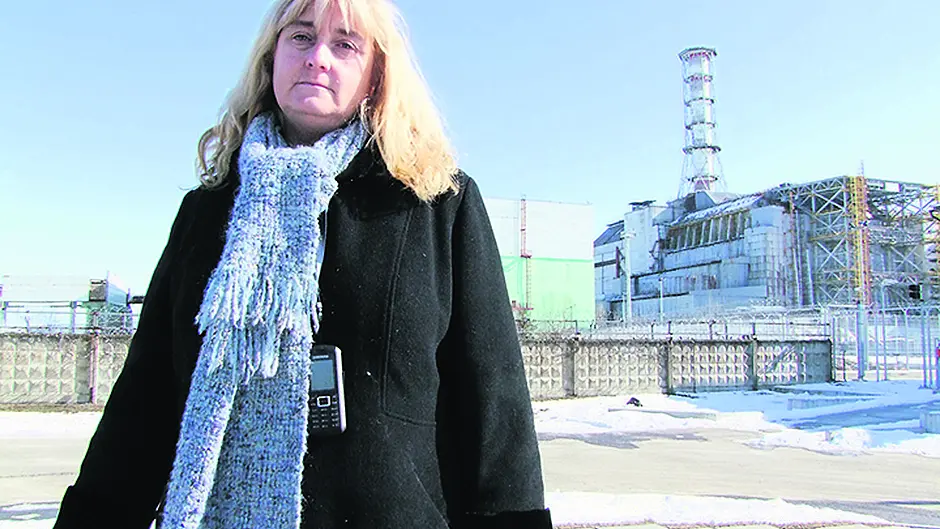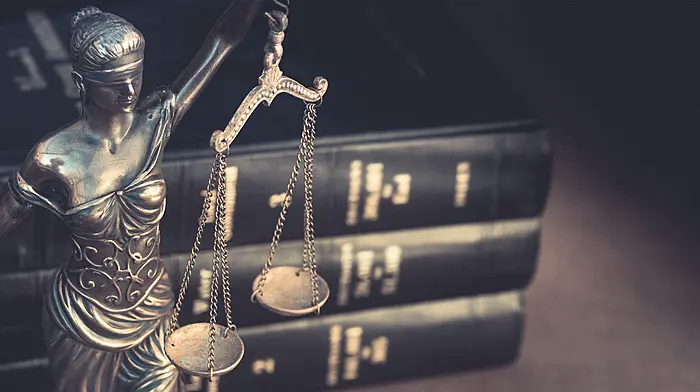Chernobyl, the new Sky Atlantic series on the 1986 nuclear disaster, is an important reminder that it should never be allowed to happen again, says Cork-born campaigner Fiona Corcoran
Chernobyl, the new Sky Atlantic series on the 1986 nuclear disaster, is an important reminder that it should never be allowed to happen again, says Cork-born campaigner Fiona Corcoran
ON April 26th 1986, our world changed forever. On that day, there was an explosion in Chernobyl, an obscure nuclear power plant in the remote nation of Ukraine. We in Ireland knew nothing about it and proceeded in ignorance, as the USSR made every effort to supress information.
Authorities allowed life to go on as normal in Ukraine.
May Day processions took place, with citizens enjoying a day off from work and taking the opportunity to enjoy the sun.
They had no idea that a deadly enemy surrounded them. An enemy that they could not see, hear, smell, taste or touch. Radiation.
This month Sky Atlantic is running its series Chernobyl – recounting in stark, dramatic detail the horror of the accident at the nuclear plant in April 1986.
Longtime campaigner Fiona Corcoran from Fountainstown has been following the series which is now mid-way through its run.
Fiona, the founder of the Greater Chernobyl Cause, received the Order of Friendship for her outstanding humanitarian work in Russia from President Vladimir Putin in 2014.
She was also the first Irish person to be honoured in this way at the Kremlin and has also been awarded with the Order of Princess Olga for her work in Ukraine and decorated with an honorary medal and diploma by President Nursultan Nazarbayev of Kazakhstan. She says the Sky series is an important reminder of an incident that should never be allowed to happen again.
‘The horrifying sequences shown bring the reality of this disaster home to us,’ says Fiona. ‘Firemen watched as their friends succumbed to the awful symptoms of radiation sickness without knowing what was happening. They watched the spontaneous incineration of others and the burns suffered due to radiation which was not visible. Their confusion and terror are evident and tragic.
‘The arrogance of those in charge of Chernobyl, who did not respect the danger of the technology, is obvious. Unfortunately, that arrogance still exists in the nuclear industry. The only way things can change is if people know what happened. If the series makes us question whether this could happen again and helps us all to be able to think critically, when we are continually told that nuclear power is a clean, safe technology, that can only be a good thing.’
The Chernobyl nuclear disaster may have happened in 1986 but it will never be truly over, says Fiona. ‘It lives on in the suffering of not only the Ukrainian population but also of the neighbouring populations of Belarus and Russia. Those of us in our 40s remember the fear Chernobyl engendered. For younger people, to see what happened through the medium of this series is vital, so that this knowledge is not lost. The accident may have been one horrific moment in time. However, it’s resulting radiation lives on and continues to contaminate.’
It was only when Sweden detected huge levels of radiation above their own country and blew the whistle that the USSR was forced to inform the world of the Chernobyl disaster.
‘That was just the beginning,’ Fiona recalls. ‘A radioactive cloud was carried on the wind around the world. Radiation respects no borders and where rain fell, it contaminated the earth as well as the sky. Animals were slaughtered across Europe, as their radiation levels were determined to be too high and dangerous for human consumption. There is no safe level of radiation but the people of Ukraine were not made aware of this fact and to this day, continue to suffer the consequences.’
The local city of Pripyat was evacuated not long after the disaster. Buses pulled up and all citizens were ordered into them, not knowing where they were going or why. Told they would be returning in a few days they left all possessions behind. These people would never see their homes again because Pripyat is now in the exclusion zone around Chernobyl and it is forbidden to return. This will be the case for hundreds of years, as the radiation remains where it fell in the form of ash and dust. Pripyat stands now as a mute testament to the horrors of radiation. A ghost town.
When Fiona visited the zone, she found the pencils and jotters the children had been using on the day before the explosion. ‘Soviet-era signs still hang from buildings near a rusting fun park and children’s dolls and toys sit on window sills gazing out across the deserted streets. It is haunting to see just how beautiful and pristine the countryside looked with wild horses roaming on the plains, but then I had to remind myself that everywhere around me was an invisible enemy – radiation –which is the creator of death, serious illnesses and deformities.’
Some years ago, Fiona met Boris Alishaev, a local fireman, who was one of the first on the scene. Boris, his colleagues and other first responders, struggled to try to contain the disaster in an horrific inferno, being exposed to fatal levels of radiation. Despite the fact that it was only possible for them to fight the fires for minutes at a time, most of them are now dead. They are called ‘The Liquidators’ and it is now becoming clear, that if it had not been for their sacrifice, the disaster could have been even worse.
Hundreds of first responders died during, or immediately after, the disaster. Most of those who survived have spent their lives suffering from serious health conditions caused by the radiation. Boris feels fortunate to have survived, but has been abandoned by a State which his team fought hard to protect. He had hoped that he and surviving colleagues would get some benefits from the Ukrainian government but now says they are not interested. ‘In Ukraine, you have to pay for medical treatment and it is very expensive. Our salaries are much too small.’
Some estimates of deaths directly attributable to the Chernobyl disaster exceed 100,000. Doctors continue to express their concern about the excessive amount of cancers and blood diseases among a new generation of children who live on the edge of the strictly-imposed exclusion zone. Children with deformities continue to be born in large numbers as radiation causes genetic damage.
At the site of the disaster, Reactor N4 now lies eerily silent, but it will remain radioactive for 1,000 years. Chernobyl’s legacy of destruction continues.
The Greater Chernobyl Cause sees the obvious problems faced by victims of the disaster. ‘Our main emphasis is on providing help and life-saving medical equipment for the long-term victims of the disaster, as well as the growing number of children who every day are being diagnosed with cancer, leukaemia and acute respiratory infections. Their hopes depend on more modern equipment to deal with cancers and other illnesses. Already, the Greater Chernobyl Cause has donated vital medical equipment, but so much more is needed,’ says Fiona.
Donations can be made by sending a cheque to the Greater Chernobyl Cause
Unit 2, Southside Industrial Estate, Pouladuff Road, Togher, Cork. Or on Paypal via www.greaterchernobylcause.ie. Call 021 432376/087 9536133 or email [email protected] for more information.








